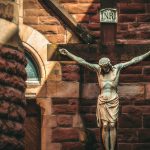The Context of the Reformation
The Protestant Reformation was a monumental movement in the 16th century that sought to challenge and reform the practices and beliefs of the Roman Catholic Church. Its origins can be traced back to a combination of social, political, and religious factors that created a ripe environment for change. Europe was undergoing tremendous transformation—rising nationalism, the spread of humanism, and increasing discontent with the corrupt practices of the Church. The growing middle class, aided by the advent of the printing press, began to question the ecclesiastical authority that the Church held over them.
A particularly egregious issue was the sale of indulgences. Indulgences were said to reduce punishment for sins, allowing people to buy their way into heaven or mitigate their time in purgatory. This commodification of salvation stirred unrest among many believers, setting the stage for a paradigm shift in the religious landscape of Europe.
Martin Luther: Catalyst of Change
At the heart of the Reformation was Martin Luther, a German theologian and monk. Born in 1483 in Eisleben, Luther’s early life was marked by a strict adherence to the teachings of the Church. However, his personal struggles with faith and righteousness led him to seek a more profound understanding of Christian doctrine. In 1517, he reached a pivotal moment that would change history forever.
On October 31, 1517, Luther famously nailed his Ninety-Five Theses to the door of the Castle Church in Wittenberg. This document criticized the Church’s sale of indulgences and introduced the idea that salvation could be reached through faith alone (sola fide) and not through works or purchases. The Theses quickly spread throughout Europe, facilitated by the printing press that allowed printed materials to circulate rapidly and reach a wide audience.
The Key Tenets of Luther’s Theology
Luther’s beliefs became the foundation of Lutheranism and were characterized by several key principles:
- Sola Scriptura: This doctrine asserts that the Bible alone is the authority on Christian faith and practice, excluding Church traditions and decrees.
- Sola Fide: Luther passionately emphasized justification by faith alone. He argued that faith was the only means by which an individual could attain salvation, denying the efficacy of good works or indulgences.
- Sola Gratia: This principle signifies that salvation is a gift from God, not earned through human efforts but given solely by God’s grace.
- The Priesthood of All Believers: Luther believed that all Christians could interpret scripture and communicate with God directly, undermining the Catholic hierarchy.
These tenets not only solidified Luther’s break from the Church but also laid the groundwork for subsequent Protestant movements that emerged in the following decades.
The Response from the Catholic Church
The Catholic Church responded vigorously to Luther’s critiques. In 1520, Pope Leo X issued a papal bull, “Exsurge Domine,” condemning Luther’s teachings and demanding that he recant. Luther’s response was drastic—he publicly burned the bull, symbolizing his rejection of papal authority.
This act of defiance led to his excommunication from the Church in 1521 and put him at the center of a growing conflict between reformers and traditional Catholics. Luther was summoned to the Diet of Worms in 1521, where he famously declared, “Here I stand; I can do no other.” This steadfast refusal to retract his views exemplified his commitment to his beliefs and solidified his role as a leader of the Reformation.
The Formation of Lutheranism
After his excommunication, Luther found refuge in the protection of Frederick the Wise, Elector of Saxony. During this time, he translated the Bible into German, making the scriptures accessible to the common people. Luther’s translation not only democratized the Bible but also helped standardize the German language.
In 1525, he married Katharina von Bora, a former nun, which further emphasized his belief in the priesthood of all believers and the idea that clergy could marry. This act was also a marker of the new social order that the Reformation was inspired to establish.
Over the next several years, Luther’s teachings began to take root in various German states. The Lutheran Church began to form, characterized by translated liturgies, hymns, and a reformed understanding of sacraments, particularly the Eucharist.
Key Historical Milestones of Lutheranism
The spread of Lutheranism was not without conflict. The Catholic Church and various rulers opposed Luther’s ideas, leading to a series of wars and disputes. Here are some key historical milestones in the development of Lutheranism:
The Peasants’ War (1524-1525)
One of the unintended consequences of the Reformation was the Peasants’ War in Germany. Many peasants, inspired by Luther’s ideas of freedom and the priesthood of all believers, demanded social reforms, including an end to serfdom. However, Luther criticized the violent uprising, believing that social order must be maintained. The suppression of the rebellion further alienated some followers and signified the complex relationship between Luther’s doctrine and societal change.
Formation of the Lutheran Confessions
In 1530, the Lutheran princes presented the Augsburg Confession at the Diet of Augsburg, officially outlining Lutheran beliefs and practices. This document served as a foundational statement for the Lutheran Church and signaled the institutionalization of Lutheranism as a distinct branch of Christianity.
The Peace of Augsburg (1555)
The Peace of Augsburg marked a crucial political solution to the religious conflict in Germany. It established the principle of cuius regio, eius religio (“whose realm, his religion”), allowing rulers to determine the religion of their own territories. This treaty recognized Lutheranism as a legitimate faith within the Holy Roman Empire and provided legal protection to Lutherans.
The Emergence of Lutheran Synods and Summits
As Lutheranism spread, various synods and summits were convened to address theological disputes, governance, and practices within the church. The Lutheran tradition developed a structured educational system, leading to the establishment of schools and seminaries to train clergy and educate the laity.
The Legacy of the Protestant Reformation
The Protestant Reformation, and specifically Luther’s role in it, had lasting impacts on Christianity and European society. Lutheranism not only altered the institution of the Church but also inspired subsequent waves of reform and the development of various Protestant denominations.
The Reformation paved the way for the Enlightenment and contributed to the rise of secularism. Luther’s emphasis on the individual’s relationship with God ushered in a new era of religious freedom and expression, influencing modern democratic thought.
The societal ramifications of the Reformation extended to education, governance, and social norms. As literacy rates rose due to the spread of printed materials, education became more widely accessible, leading to a more informed populace capable of questioning authority.
Conclusion
The history of the Protestant Reformation, with Martin Luther at its helm, represents a critical juncture in the evolution of Christianity. Luther’s courageous stand against corruption, his theological innovations, and his commitment to scriptural integrity galvanized a movement that would reshape western society. Lutheranism, while just one of the branches resulting from this upheaval, continues to influence faith practices and cultural norms worldwide. The spirit of inquiry and reform initiated during this time remains a vital part of the religious landscape today.





One thought on “History of the Protestant Reformation”